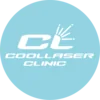What is subcutaneous acne?
Subcutaneous acne are inflammatory processes that occur in the deep layers of the skin. They do not have a visible pus head like regular blackheads, but can cause significant redness and soreness. These inflammations are the result of clogged pores, where sebaceous glands produce excessive amounts of sebum and form closed comedones. Clogged pores create a breeding ground for bacteria, which leads to inflammation.
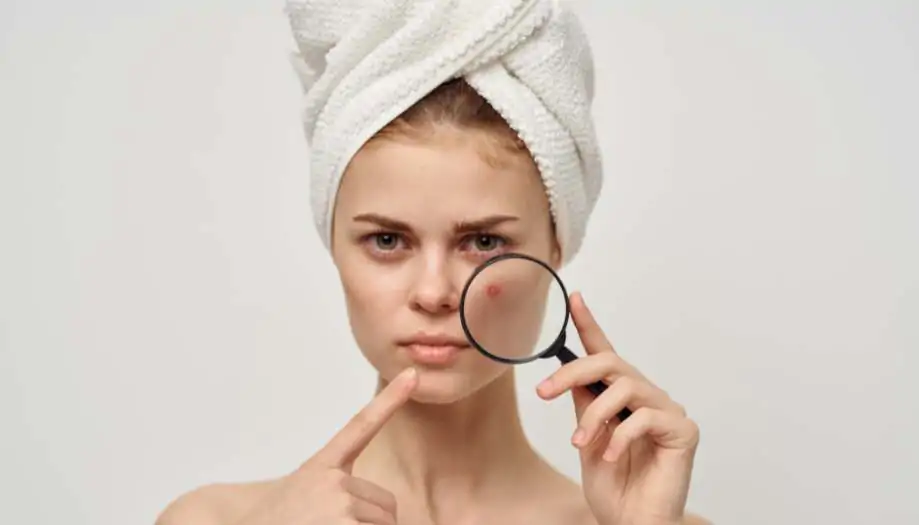
Definition and characteristics of subcutaneous acne
Subcutaneous acne is one of the most unpleasant forms of acne that cause both physical and psychological discomfort. These inflammations occur deep under the skin, making them difficult to treat on their own and making the healing process longer. It is important to understand not only the causes of subcutaneous acne, but also the appropriate treatment methods to minimize the effects on the skin and prevent possible complications. In this article, we will discuss in detail the causes of subcutaneous acne, its treatment and preventive measures.
Subcutaneous acne is difficult to treat because its deep location under the skin makes it difficult to access the inflammation. This often causes prolonged pain and can also lead to scarring and blemishes after they disappear. It is important to start treatment in time to prevent the development of complications.
Как отличить подкожные прыщи от других видов акне?
Subcutaneous pimples differ from other types of acne in their depth and structure. They form beneath the surface of the skin and do not form a white, pus-filled head, such as papules or pustules. They are usually dense to the touch, can be large in size, and take a long time to mature. These pimples often cause more discomfort and pain than superficial types of acne. Unlike superficial acne, subdermal acne rarely goes away on its own and often requires medical intervention to clear it up.
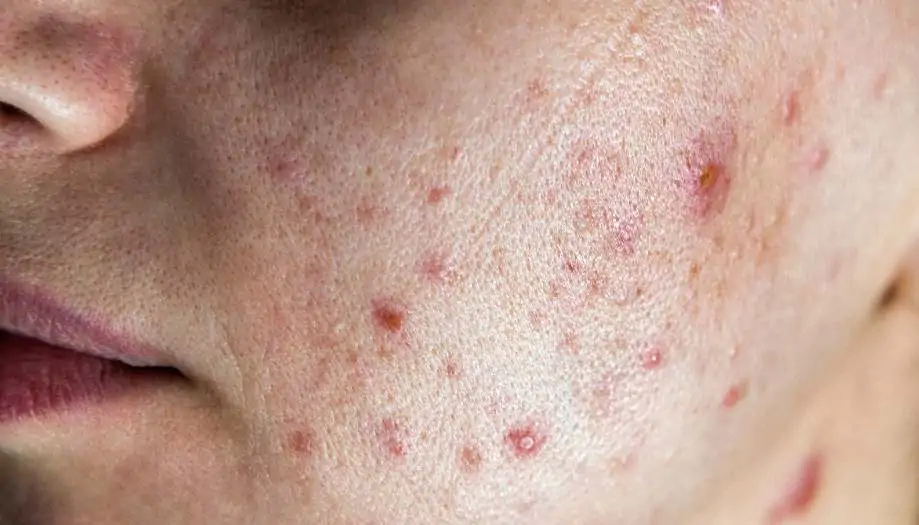
| Type of pimple | Characterization | Soreness | Depth of location |
| Superficial acne | They have a festering head | Light | On the surface of the skin |
| Pustules | Small purulent inflammations | Moderate | In the upper layers of the skin |
| Subcutaneous acne | Dense, no purulent head | High | Deep layers of skin |
The main causes of subcutaneous acne
Sebaceous gland disorder
One of the main causes of subcutaneous acne is overactive sebaceous glands. These glands produce sebum, which is necessary to moisturize and protect the skin. However, excess sebum (sebum) clogs pores, which creates conditions for inflammation. Sebaceous glands become overactive due to various factors such as hormonal changes, stress and nutrition. As a result, subcutaneous acne often appears in the areas with the most sebum – the face, neck, back and shoulders.
Hormonal changes and the effects of stress
Hormonal changes are another common cause of subcutaneous acne. During puberty, pregnancy, menstrual cycle or menopause, the body undergoes dramatic changes in hormone levels, which leads to an increase in sebum production. This process is intensified by stress, which triggers the release of hormones that stimulate the sebaceous glands.
Women are particularly likely to suffer from subcutaneous acne during their menstrual cycle or with hormonal disorders such as polycystic ovarian syndrome. Men may experience similar problems during puberty, when testosterone levels increase dramatically.
Genetic predisposition
Genetics also plays a significant role in the appearance of subcutaneous acne. If your parents or close relatives had acne problems, you are much more likely to develop subcutaneous acne. Genetic predisposition can affect the level of sebum activity, skin texture and even the tendency to inflammation.
Poor facial hygiene
Improper cleansing of the skin can cause sebum, dead cells and impurities to accumulate in the pores, creating a favorable environment for the development of subcutaneous acne. Regular skin cleansing is one of the keys to preventing acne. If not enough attention is paid to facial hygiene, dirty pores can become inflamed, leading to the formation of deep pimples.
Improper diet and poor eating habits
Nutrition has a direct impact on skin health. Eating foods high in sugar, fats and carbohydrates can increase sebum production and increase the risk of acne. An unhealthy diet weakens the immune system and worsens skin health, which can contribute to the development of acne.

Effect of cosmetics and skin care products
The use of unsuitable cosmetics can cause the appearance of subcutaneous acne. This is especially true of cosmetics that contain comedogenic ingredients, i.e. substances that can clog pores. Products rich in oils or containing dense textures can make it difficult for the skin to breathe, which leads to the accumulation of sebum and impurities in the pores. The result of this process is inflammation and, as a consequence, subcutaneous acne. It is very important to choose cosmetics that are labeled “non-comedogenic”, especially if the skin is acne-prone.
It is also important to pay attention to proper makeup removal and skin cleansing before bedtime. Insufficiently thorough removal of cosmetics can lead to the accumulation of residual products in the pores, which also causes inflammation.
Influence of the external environment
Environmental factors such as air pollution can have a negative impact on the skin. Particles of dust, dirt and toxic substances in the air settle on the skin throughout the day, which can lead to clogged pores and inflammation. Also, exposure to ultraviolet rays can worsen skin conditions, causing dryness and irritation, which in turn provokes the appearance of acne.
Protecting your skin from negative environmental factors such as pollution and UV radiation with moisturizers and protectors, as well as regular cleansing, will help prevent subcutaneous inflammation.
Treatment of subcutaneous acne by folk methods
Some home methods can help to control subcutaneous acne, especially in the initial stages of inflammation. However, their effectiveness can vary and they cannot always replace professional treatment. Popular home methods include:
- Compresses with salt or baking soda. Salt helps to draw out inflammation and reduce swelling, and baking soda helps to reduce inflammation and normalize the acid-alkaline balance of the skin.
- Masks with clay. Clay has absorbent properties that help to clean pores and reduce sebum production.
- Wiping the skin with herbal decoctions. Infusions of chamomile, calendula and green tea can be used to wipe inflamed skin, as they have anti-inflammatory and soothing effects.
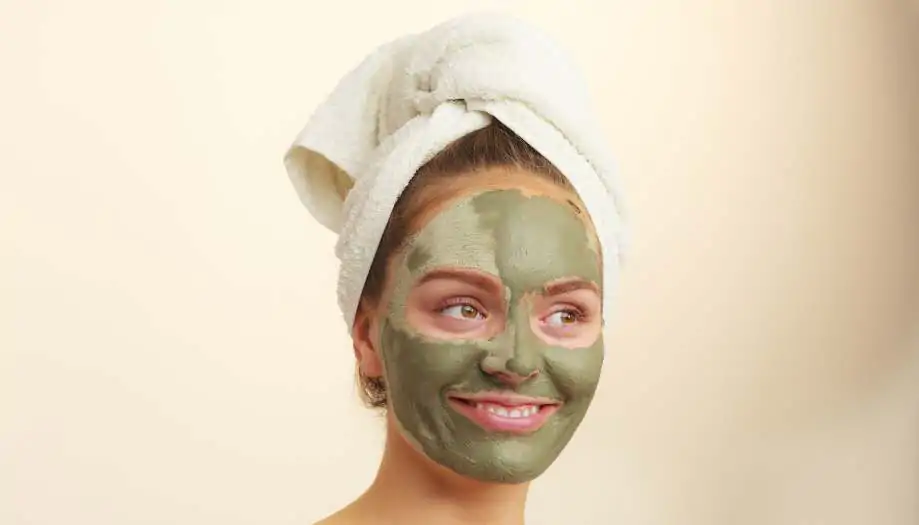
Home remedies can be useful as an adjunctive treatment, but they should not completely replace drug therapy or professional treatments.
How to treat subcutaneous acne with pharmacy remedies
Important: Medication is only prescribed by a doctor.
One of the most effective ways to treat subcutaneous acne is drug therapy. There are several groups of medications that can be prescribed by a dermatologist depending on the severity of the problem.
- Antibacterial drugs. They are prescribed to fight infections caused by bacteria that provoke inflammation in the pores. Antibiotics can be either topical (ointments, gels) or for internal use in the form of tablets.
- Retinoids. These medications promote skin cell renewal, reducing the risk of acne by preventing clogged pores. They can be either topical or systemic.
- Hormonal preparations. In case the cause of subcutaneous acne is hormonal disorders, the doctor may prescribe hormonal therapy. Such drugs can help to balance hormone levels and normalize the work of sebaceous glands.
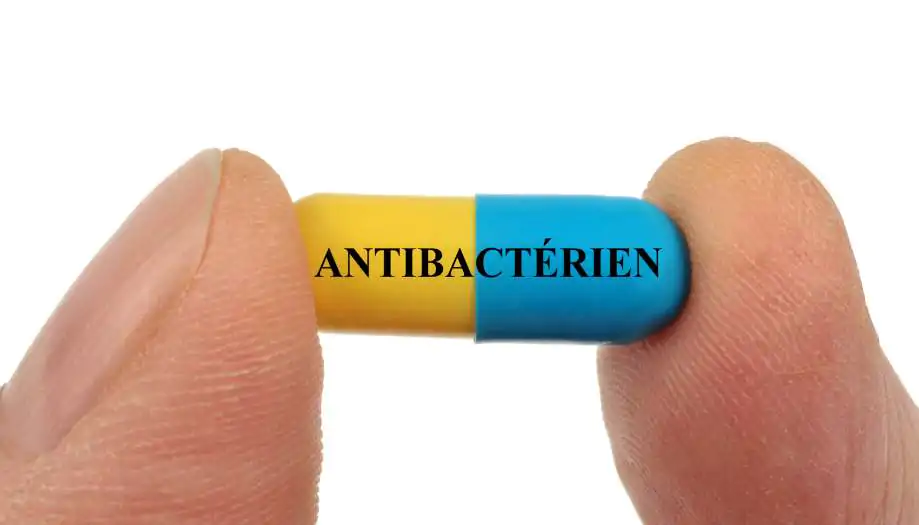
| Drug name | Drug group | Form of release | Average price (in UAH) | Packing |
| Zinerit | Antibacterial drugs | Powder for solution preparation | 300-350 UAH | 30 ml bottle |
| Skinoren | Antibacterial drugs | Gel for external application | 450-500 UAH | Tube 30 g |
| Erythromycin | Antibacterial drugs | Ointment for external application | 40-60 UAH | Tube 10 g |
| Doxycycline | Antibacterial drugs | Pills | 60-80 UAH | Pack of 10 tablets |
| Differin | Retinoids | Gel for external application | 600-700 UAH | Tube 30 g |
| Roaccutane | Retinoids | Capsules for internal use | 1700-2000 UAH | Packaging 30 capsules of 20 mg |
| Tretinoin | Retinoids | Cream for external use | 450-550 UAH | Tube 20 g |
| Jes | Hormonal medications | Pills | 350-400 UAH | Pack of 28 tablets |
| Yarina | Hormonal medications | PillsТаблетки | 400-450 UAH | Packaging 21 tablets |
| Verospiron | Hormonal medications | Pills | 200-250 UAH | Pack of 20 tablets |
These medications can only be prescribed by a doctor after evaluating the patient’s skin condition and determining the causes of subcutaneous acne.
How to treat subcutaneous acne in the clinic
Treating subcutaneous acne in a clinic is the most effective way. A cosmetologist can offer several options of procedures that will help to eliminate inflammation and improve the condition of the skin.
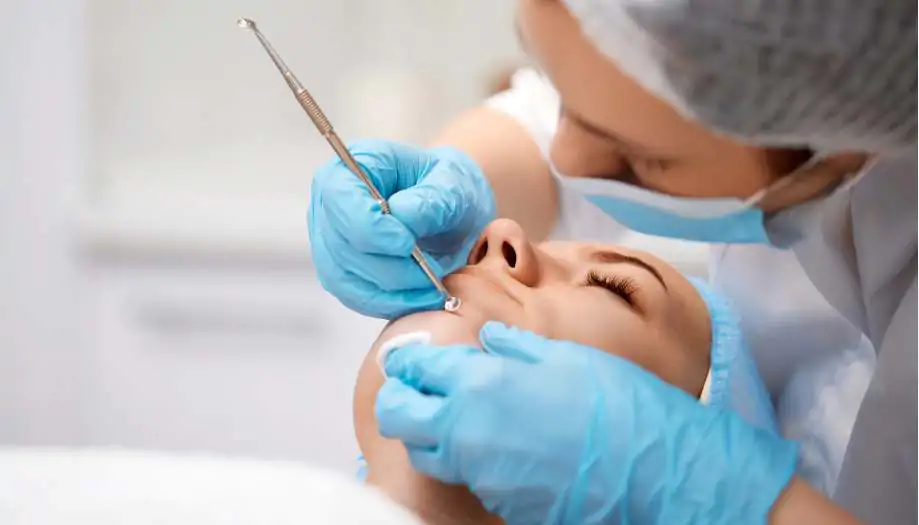
- Mechanical cleaning of the face. This procedure allows you to clean the pores from impurities and sebum, which are the main causes of inflammation. However, it is worth noting that mechanical cleaning should be performed only in professional conditions, as the wrong technique can aggravate the problem.
- Chemical Peels. Peels using acids (such as salicylic acid or glycolic acid) help to remove dead skin cells, which improves skin texture and prevents clogged pores. Yellow peel (retinoic peel) is a procedure for qualitative improvement of skin texture
- LED therapy — Using a combination of cold light of violet and red colors helps fight the bacteria that cause Acne and internal acne.
- Laser treatment: Laser treatments such as Laser Carbon Peel aim to reduce inflammation and stimulate skin regeneration. They can effectively manage acne problems and reduce the risk of scarring.
- IPL Therapy. Broadband light pulses with a specific wavelength quickly and effectively treat common acne by destroying P. acnes bacteria and accelerating the healing of existing inflammation.Here is a table showing the features of different treatments for acne:
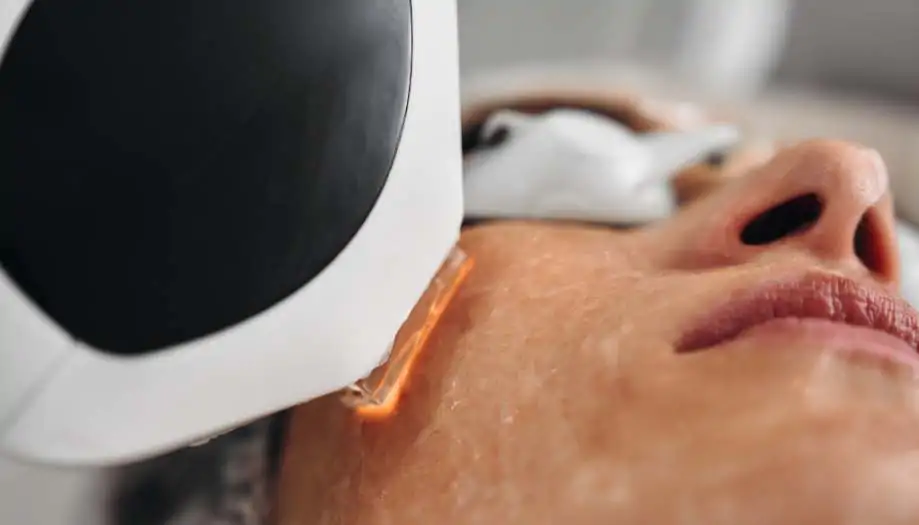
| Procedure | Description | Advantages | Risks |
| ✅ Mechanical facial cleansing | Clears the pores of impurities and sebum. Only performed professionally to avoid damage to the skin. | Deep cleansing of the skin, improvement of pores. | The possibility of scarring and inflammation with improper technique. |
| ✅ Chemical peel | Peels with acids (salicylic, glycolic) remove dead cells, improve skin texture and prevent clogged pores. | Skin renewal, reducing inflammation and narrowing pores. | May cause skin irritation, flaking, and hypersensitivity to the sun. |
| ✅ LED therapy | Uses violet and red light to fight the bacteria that causes acne and internal pimples. | Destroying bacteria, reducing inflammation. | Does not always give quick results, several sessions are required. |
| ✅ Laser treatment | Laser treatments such as carbon peels reduce inflammation and stimulate skin regeneration, effectively fighting acne and preventing scarring. | Stimulating skin regeneration, eliminating acne, reducing the risk of scarring. | Long recovery process, possibility of redness and irritation after the procedure. |
| ✅ IPL therapy | Broadband light pulses destroy P. acnes bacteria, accelerating the healing of inflammation and treating common acne. | Fast and effective treatment of acne, reduction of inflammatory elements. | Requires several sessions for a lasting effect, may cause dryness and skin irritation. |
Prevention of subcutaneous acne
Proper cleansing and skin care
To prevent subcutaneous acne, it is important to follow the right skin care rules. Skin cleansing should be regular but gentle so as not to disturb the skin’s natural balance. Using products that are suitable for your skin type will help prevent clogged pores. It is recommended to use mild cleansers that do not contain aggressive chemical components and do not dry out the skin.
In addition to cleansing, moisturizers should be used to help maintain optimal moisture levels in the skin. Gentle and non-comedogenic moisturizing creams are suitable for everyday care.
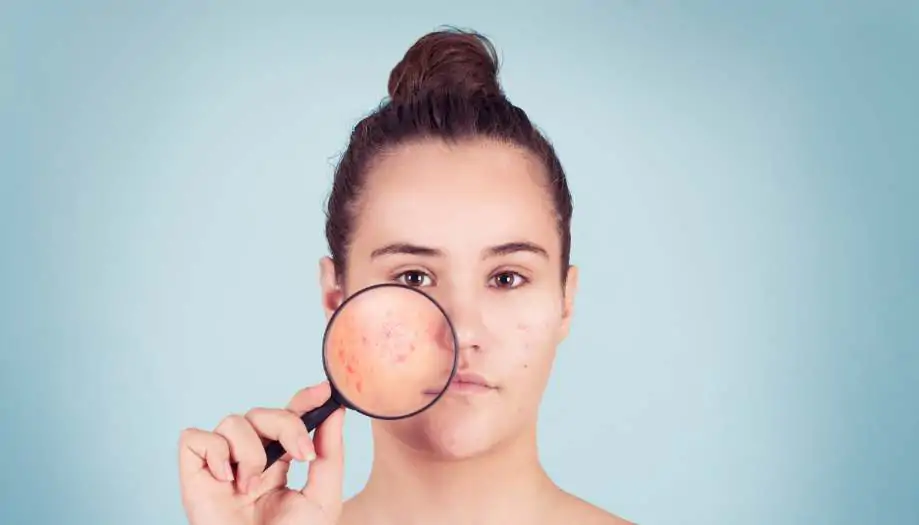
Foods and their effect on the skin
Nutrition plays an important role in maintaining healthy skin. To reduce the risk of subcutaneous acne, you should avoid foods that can stimulate sebum production and cause inflammation. Such foods include:
- Foods high in sugar and carbohydrates such as confectionery, sweets, baked goods.
- Fatty and fried foods that can provoke inflammatory processes.
- Dairy products, especially those high in fat and protein.
Replacing these foods with fresh vegetables, fruits, nuts, and fish helps keep your skin healthy from the inside out.
Avoid stress and hormonal disruptions
Stress can significantly affect the condition of the skin and cause aggravation of subcutaneous acne. Under stress, the body releases cortisol, a hormone that stimulates the sebaceous glands and increases sebum production. This leads to an increased risk of inflammation and acne. To prevent such consequences, it is important to learn how to manage stress.
Helpful stress management techniques include meditation, physical activity and yoga. Regular exercise helps reduce stress levels and improves the overall health of the body, which has a positive effect on the skin. Meditation and breathing exercises help calm the nervous system, which reduces the likelihood of acne.
In addition, hormone levels in the body should be monitored. If hormonal disorders such as polycystic ovaries, endocrine disorders or thyroid problems are suspected, it is advisable to see a doctor for diagnosis and appropriate treatment.
Keep your belongings clean
One important aspect of subcutaneous acne prevention is keeping items that come in contact with the skin clean. Cell phones, pillowcases, towels, hats, and other items that come in frequent contact with the face can accumulate dirt, bacteria, and sebum. This contributes to skin contamination and increases the risk of inflammation.
Regular washing of pillowcases, towels and hats helps to avoid the reappearance of contaminants on the skin. It is also advisable to regularly wipe the phone screen with antiseptic wipes to avoid skin contact with bacteria.
Use of sunscreen
Although sunlight can temporarily improve the skin’s condition, giving it an even tone and drying up inflammation, long-term UV exposure has negative consequences. The sun dries the skin, which stimulates the sebaceous glands to compensate for moisture loss, and this can lead to new inflammation.
Using sunscreen with SPF not only protects the skin from premature aging and burns, but also helps prevent subcutaneous acne on the face and body. It is important to choose products that are oil-free and do not clog pores.
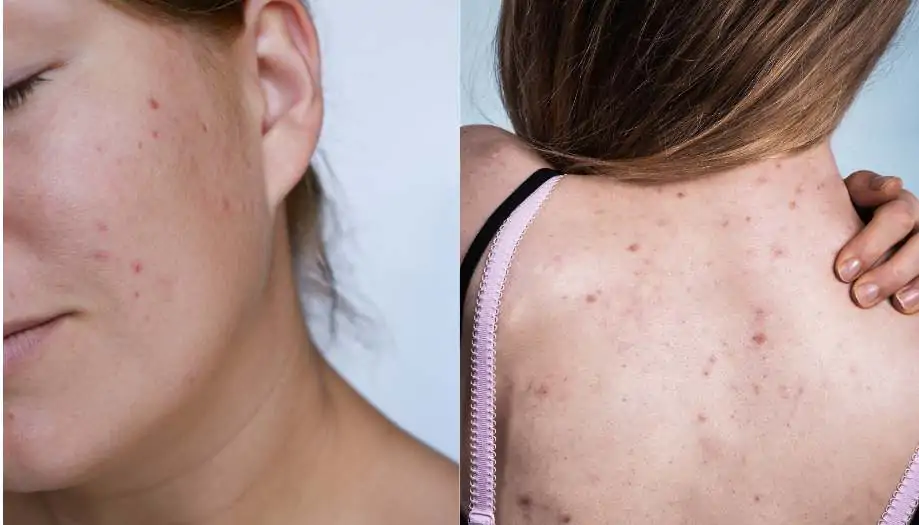
Frequently Asked Questions
1. How long does it take for subcutaneous acne to go away?
Subcutaneous pimples can take several days to weeks to heal, depending on their depth and size. It is important not to squeeze them out yourself, as this can aggravate the inflammation and lead to scarring.
Can I squeeze out subcutaneous pimples?2. Can I squeeze out subcutaneous pimples?
It is not recommended to squeeze out subcutaneous pimples, as they are located deep under the skin, and attempts at mechanical impact can lead to the rupture of tissues and the spread of infection. It is better to consult a dermatologist for professional help.
What foods contribute to acne?3. What foods contribute to acne?
Foods high in sugar, fats, fast carbohydrates and dairy products can worsen skin conditions. Try to avoid excessive consumption of these foods if you are acne prone.
How can I prevent the formation of subcutaneous acne?4. How can I prevent the formation of subcutaneous acne?
To prevent the appearance of subcutaneous acne, it is important to follow regular skin care, avoid stress, eat right and use non-comedogenic cosmetics. It is also recommended to cleanse the skin regularly and not to abuse aggressive skin care products.
Can subcutaneous acne be treated with folk remedies?5. Can subcutaneous acne be treated with folk remedies?
Some folk remedies, such as clay masks or baking soda compresses, can be helpful in alleviating the symptoms of subcutaneous acne. However, their effectiveness is limited and it is better to consult a dermatologist for full treatment.
What cosmetic procedures are most effective against subcutaneous acne?6. What cosmetic procedures are most effective against subcutaneous acne?
Chemical peeling, laser treatment and microdermabrasion are considered to be the most effective procedures. These methods help not only to clean the pores, but also to improve the overall condition of the skin, preventing the appearance of new inflammations.
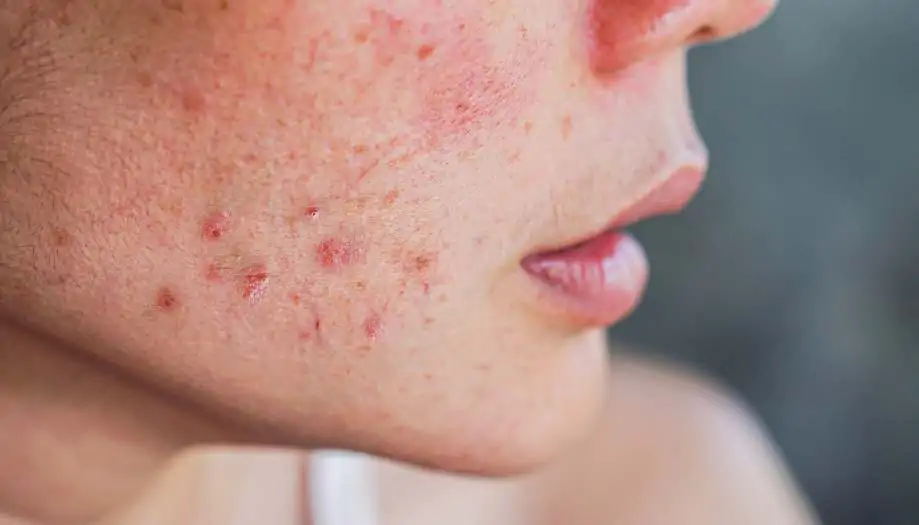
Calculate the exact cost of Laser or IPL treatment for subcutaneous acne
Leave your details and we will contact you for an accurate price quote for the procedures

Subcutaneous acne is an unpleasant and painful problem that requires a comprehensive approach to treatment and prevention. The reasons for their appearance can range from hormonal changes to improper skin care and nutrition. It is important to seek professional help in time and choose the right treatment to minimize the consequences and avoid complications.
Coolaser Clinic reminds you: Don’t forget the importance of prevention, which includes proper skin cleansing, balanced nutrition, sun protection and controlling stress levels. Keeping your belongings clean and using quality grooming products will also help prevent the appearance of subcutaneous acne.
Sources:

